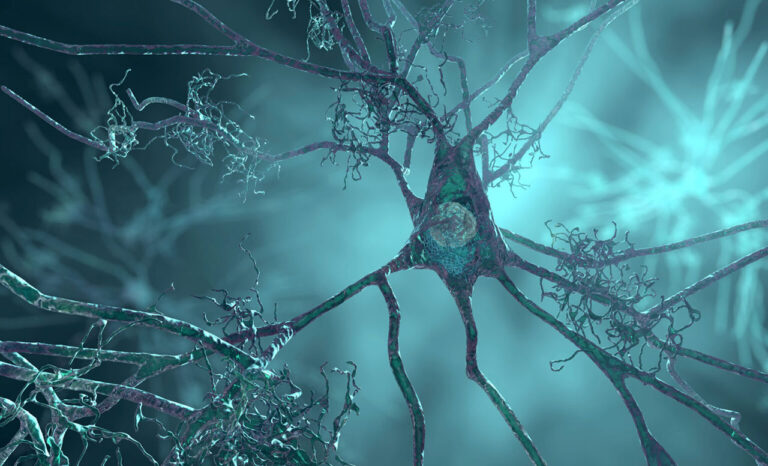
Viêm đa dây thần kinh mất myelin mạn tính (CIDP) và xơ cứng teo cơ một bên (ALS) là những rối loạn thần kinh hiếm gặp và gây suy nhược. Mặc dù cả hai tình trạng đều ảnh hưởng đến chức năng thần kinh và cơ, nhưng chúng khác nhau đáng kể về loại dây thần kinh bị ảnh hưởng, nguyên nhân, dấu hiệu và triệu chứng, tiến triển và tỷ lệ mắc bệnh., chẩn đoán và điều trị.
Nhận hỗ trợ tài chính
Bài viết này thảo luận về những khác biệt chính giữa các rối loạn này để giúp bệnh nhân nhận được phương pháp điều trị phù hợp.
Bệnh viêm đa dây thần kinh mất myelin mãn tính (CIDP) là gì?
CIDP là một rối loạn tự miễn hiếm gặp và kéo dài, chủ yếu ảnh hưởng đến các dây thần kinh của hệ thần kinh ngoại biên. Trong tình trạng này, hệ thống miễn dịch tấn công nhầm và phá hủy bao myelin, một lớp bảo vệ bao phủ các sợi thần kinh.
Tình trạng viêm quá mức do bệnh tự miễn gây tổn thương các dây thần kinh ngoại biên, dẫn đến suy nhược cơ tiến triển, mất sức và các vấn đề về cảm giác.
Bệnh xơ cứng teo cơ một bên (ALS) là gì?
Xơ cứng teo cơ một bên (ALS) là một rối loạn thoái hóa thần kinh tiến triển ảnh hưởng đến các tế bào thần kinh vận động của hệ thần kinh trung ương (các dây thần kinh vận động ở não và tủy sống). Các dây thần kinh vận động chủ yếu kiểm soát hơi thở và các cử động cơ tự chủ. Khi tín hiệu từ các dây thần kinh không được truyền đến cơ đúng cách do thoái hóa neuron vận động, cơ sẽ trở nên yếu và bắt đầu co giật.
ALS đôi khi còn được gọi là bệnh Lou Gehrig và bệnh thần kinh vận động (MND).
CIDP so với ALS: Nguyên nhân
Nguyên nhân chính xác của cả hai tình trạng thần kinh này vẫn chưa rõ ràng. Tuy nhiên, một bất thường trong hệ thống miễn dịch đã được phát hiện là nguyên nhân gây ra CIDP, đó là lý do tại sao nó được gọi là một tình trạng tự miễn.
ALS được coi là một bệnh di truyền vì nhiều nghiên cứu đã chỉ ra mối liên hệ di truyền. Ví dụ, đột biến ở một số gen cụ thể như gen C9orf72, ARDBP và FUS có thể dẫn đến ALS, vì những gen này điều chỉnh hoạt động bình thường của các tế bào thần kinh vận động. Dạng ALS này được gọi là ALS gia đình.
Theo ước tính, một đột biến gen đã được tìm thấy ở 60% của những người mắc bệnh ALS gia đình.
CIDP so với ALS: Dấu hiệu và triệu chứng chính
Biểu hiện điển hình của CIDP là yếu cơ đối xứng, đặc biệt là ở chân, sau đó lan xuống tay. Bệnh nhân CIDP cũng có thể gặp các triệu chứng sau:
- Mất phản xạ
- Cảm giác ngứa ran và tê ở tay và chân
- Mất thăng bằng và khó đi lại
Thông thường, các triệu chứng của CIDP phát triển dần dần trong vài tháng.

Mặt khác, ALS chủ yếu làm suy giảm chức năng vận động, dẫn đến cứng cơ, co giật/chuột rút và suy yếu cơ. Thông thường, một chân bị ảnh hưởng đầu tiên bởi các triệu chứng này (biểu hiện không đối xứng) trước khi lan sang các vùng khác của cơ thể. Hơn nữa, khi tình trạng bệnh trở nặng hơn, bệnh nhân ALS còn gặp phải các triệu chứng sau:
- Giảm cân
- Teo cơ (teo cơ)
- Nói ngọng (rối loạn vận ngôn)
- Khó nhai hoặc nuốt (khó nuốt)
Tuy nhiên, ở bệnh ALS, chức năng cảm giác hầu như không bị ảnh hưởng và bệnh nhân không cảm thấy ngứa ran và tê liệt.
Nói chuyện với một chuyên gia
Về Trợ cấp đồng thanh toánCIDP so với ALS: Tiến triển của bệnh
CIDP là một căn bệnh hiếm gặp và kéo dài, tiến triển dần dần và đạt đến trạng thái nghiêm trọng sau 8 tuần.
Mặt khác, khi bệnh ALS bắt đầu, bệnh tiến triển nhanh chóng và trở nên tồi tệ hơn theo thời gian.
CIDP so với ALS: Tỷ lệ mắc bệnh
Theo NORD, khoảng 5 – 7 trường hợp CIDP trên 100.000 cá nhân được báo cáo hàng năm. CIDP có thể xảy ra ở mọi lứa tuổi nhưng phổ biến hơn ở người cao tuổi (50-60 tuổi). Nam giới có nguy cơ mắc CIDP cao hơn nữ giới. Hơn nữa, CIDP có thể tái phát sau khi điều trị.
Ngược lại, ALS ảnh hưởng đến khoảng 2 – 5 người trong số 100.000 cá nhân trên toàn thế giới, và gần 32.000 người đang sống chung với bệnh ALS tại Hoa Kỳ. Rối loạn ALS có thể xảy ra ở mọi lứa tuổi, nhưng các triệu chứng thường xuất hiện sau 50 tuổi hoặc trong độ tuổi từ 50 đến 75.
Giống như CIDP, ALS cũng phổ biến ở nam giới hơn nữ giới.
CIDP so với ALS: Chiến lược chẩn đoán và điều trị
Việc chẩn đoán CIDP và ALS rất khó khăn do các triệu chứng rất đa dạng. Tuy nhiên, bác sĩ thường tiến hành nhiều xét nghiệm khác nhau như điện cơ đồ, đo dẫn truyền thần kinh, sinh thiết thần kinh/cơ, chụp MRI, chọc tủy sống và xét nghiệm máu để xác định chẩn đoán ALS và CIDP.
Mặc dù các bác sĩ thực hiện cùng một quy trình chẩn đoán cho CIDP và ALS, nhưng chiến lược điều trị của họ lại khác nhau.
Trong trường hợp rối loạn CIDP, có ba liệu pháp tiêu chuẩn như sau:
- Thuốc Corticosteroid
- Trao đổi huyết tương
- Liệu pháp IVIG
Trong trường hợp ALS, không có phương pháp điều trị nào có thể đảo ngược tổn thương thần kinh vận động. Tuy nhiên, một số loại thuốc (ví dụ: Riluzole, Edaravone và Tofersen) được FDA chấp thuận, cũng như phục hồi chức năng (ví dụ: vật lý trị liệu, trị liệu nghề nghiệp và trị liệu ngôn ngữ), có thể giúp làm chậm tiến triển của bệnh, cải thiện chất lượng cuộc sống và kéo dài tuổi thọ cho bệnh nhân.
Bản tóm tắt
CIDP là một rối loạn tự miễn dịch ảnh hưởng đến hệ thần kinh ngoại biên, trong khi ALS là một bệnh thoái hóa thần kinh ảnh hưởng đến các dây thần kinh vận động của hệ thần kinh trung ương. Mặc dù cả hai tình trạng này có nguyên nhân, triệu chứng, tốc độ tiến triển và quy trình điều trị khác nhau, nhưng chúng có chung quy trình chẩn đoán. Việc hiểu được những khác biệt chính này có thể giúp kiểm soát tình trạng bệnh và cải thiện chất lượng cuộc sống của bệnh nhân.
TÀI LIỆU THAM KHẢO:
- Echaniz-Laguna, A., Degos, B., Mohr, M., Kessler, R., Urban-Kraemer, E., & Tranchant, C. (2005). Nghiên cứu trên ba bệnh nhân mắc bệnh xơ cứng teo cơ một bên và bệnh lý đa dây thần kinh tương tự CIDP. Cơ và thần kinh, 33(3), 356–362. https://doi.org/10.1002/mus.20475
- Bệnh xơ cứng teo cơ một bên (ALS). (nd). Viện Quốc gia về Rối loạn Thần kinh và Đột quỵ. https://www.ninds.nih.gov/health-information/disorders/amyotrophic-lateral-sclerosis-als
- Bệnh xơ cứng teo cơ một bên: MedlinePlus Genetics. https://medlineplus.gov/genetics/condition/amyotrophic-lateral-sclerosis/#causes
- Gogia, B., Cabrero, FR, Suheb, MZK, Lui, F., & Rai, PK (2024, ngày 4 tháng 3). Viêm mạn tính mất myelin đa rễ thần kinh. StatPearls – Kệ sách NCBI. https://www.ncbi.nlm.nih.gov/books/NBK563249/













